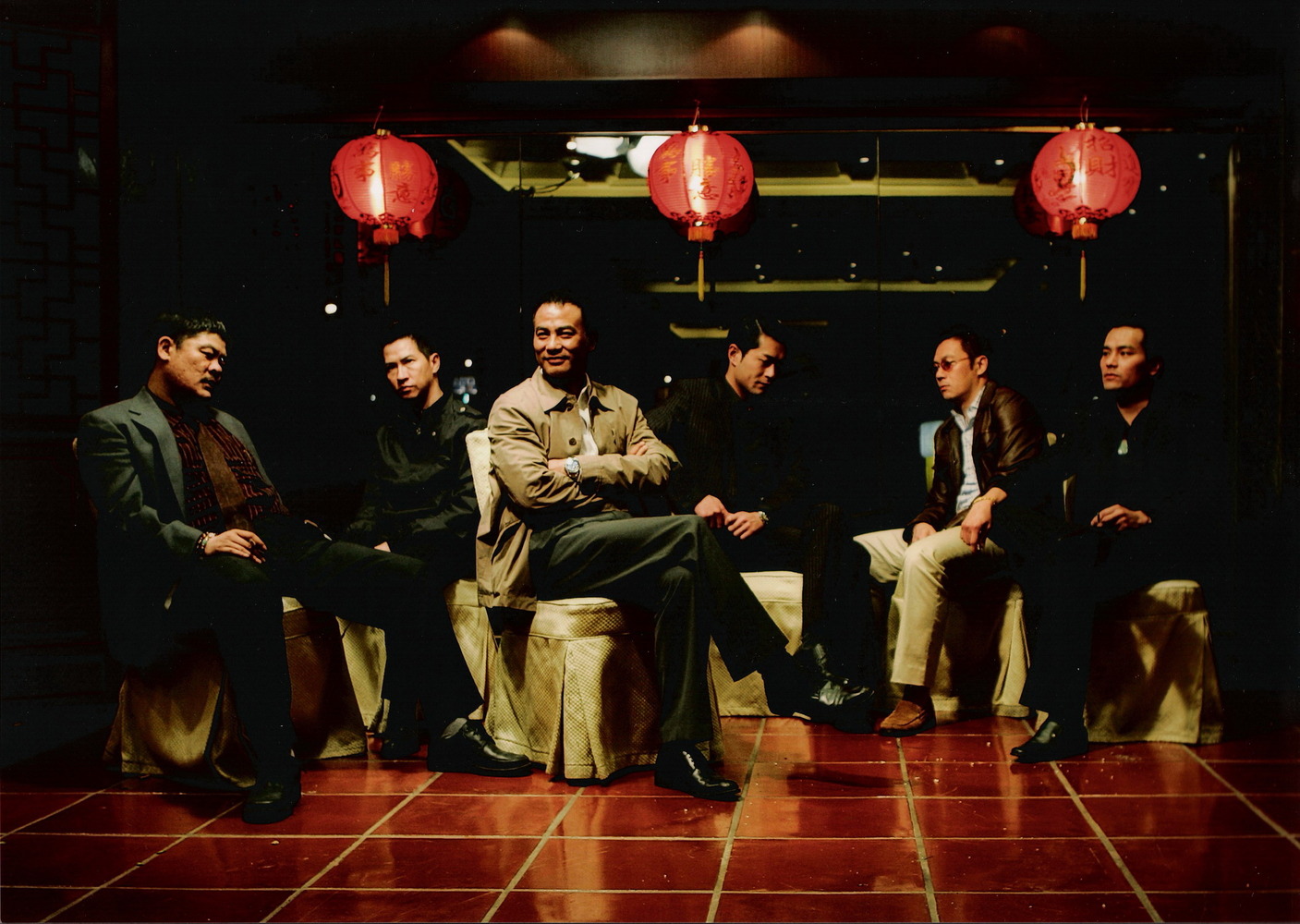It is a hot dusty afternoon in 1840.
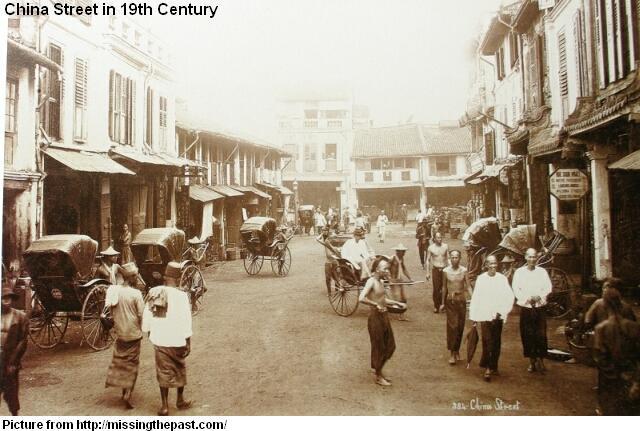 China Street, 19th century Singapore
China Street, 19th century Singapore
You are a sin kheh -- meaning, "a new immigrant" -- from Fujian. You just arrived at the famed port of Singapore where, hopefully, the streets are lined with gold coins. And dumplings.
Fresh off the boat
Getting out of that floating sardine can of a junk is literally a breath of fresh air. But wait. Where do you start?
Everything here looks and sounds completely new. From the tropical smells to the weird-coloured people and their incomprehensible babble. You begin to panic as three weeks’ worth of seasickness threatens to re-acquaint itself.
Suddenly, a voice cries out your name in Hokkien.
It’s your neighbour Ah Kow from back home. Ah Kow had left Fujian five months earlier, and rumour has it, he has made quite a life for himself over here in Singapore.
Ah Kow listens intently to your little problem and tells you about this wonderful association that he recently joined and promises that they will take care of everything for you.
You're a tiny bit sceptical, but it’s your only chance of making it alive 3,000km away from home.
Hesitating a little, you agree to join.
Welcome to the world of secret societies.
The mother of all triads
It is thought that the first triad -- also known as secret society -- ever formed was the Tian Di Hui (天地会). It is literally, "Heaven Earth Society", set up in Fujian.
Its name reflects the harmonious relationships between Heaven, Earth, and Man -- the triad -- according to Chinese beliefs.
Throughout history, Tian Di Hui was also known by a confusing variety of names: Three Dots Society, Three Unities Society, and even, Pure Water Society.
Obviously, some members did not get the memo.
There are many legends about the founding of Tian Di Hui, but they generally run along these lines:
However, his senior officials became jealous and falsely accused the monks of treason.
Alarmed, Kangxi ordered the monks to be wiped out. His men set fire to the Shaolin monastery in the dead of night, killing all but five who managed to escape and survive the fighting.
Along the way, they encountered divine omens that prompted them to create a society to overthrow the Qing dynasty.
On the day of their formation, there was a bright red glow in the sky, which inspired them to change their surnames to Hong (洪), which sounds like the Mandarin character for "red" (红).
These five monks went on to form the five different sub-lodges of Tian Di Hui.
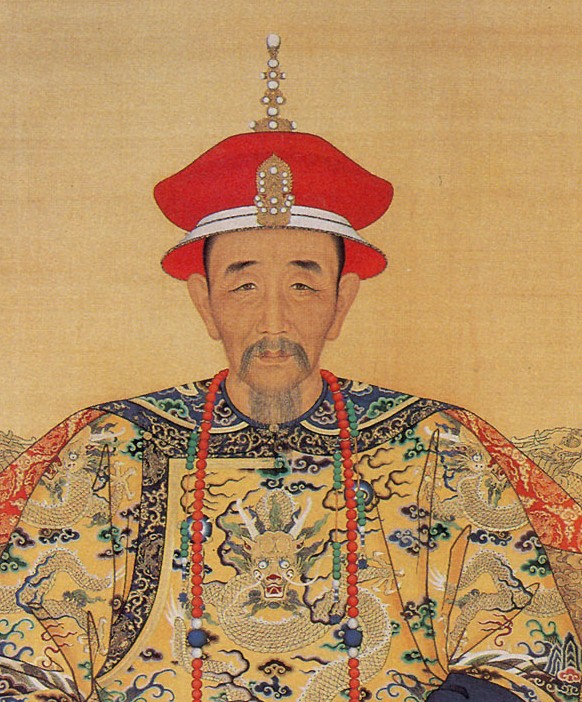 Kangxi: Flip flops faster than some politicians and bloggers
Kangxi: Flip flops faster than some politicians and bloggers
Secret societies' purpose in Singapore
Before they were criminalised, secret societies (会) were not much different from clan associations (会馆).
Both helped Chinese immigrants by providing them with a brotherhood network of support and financial help.
This was especially important for new Chinese immigrants, who found themselves alienated by the colonial government.
Ah Kow boasts that his secret society, the Ghee Hin Kong Si (义兴公司), is an offshoot of the original Tian Di Hui, and it is the biggest and most famous in Singapore with an estimated 3,000 members from all five of the biggest dialect groups.
"Much bigger than the Kwan Teck Hui (关帝会) or Hai San (海山) societies," scoffs Ah Kow.
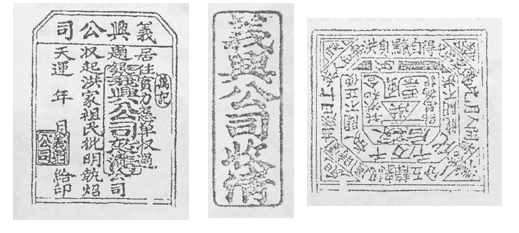 Left and centre: Receipts by Ghee Hin Kong Si.
Left and centre: Receipts by Ghee Hin Kong Si.
Right: Ghee Hin membership certificate.
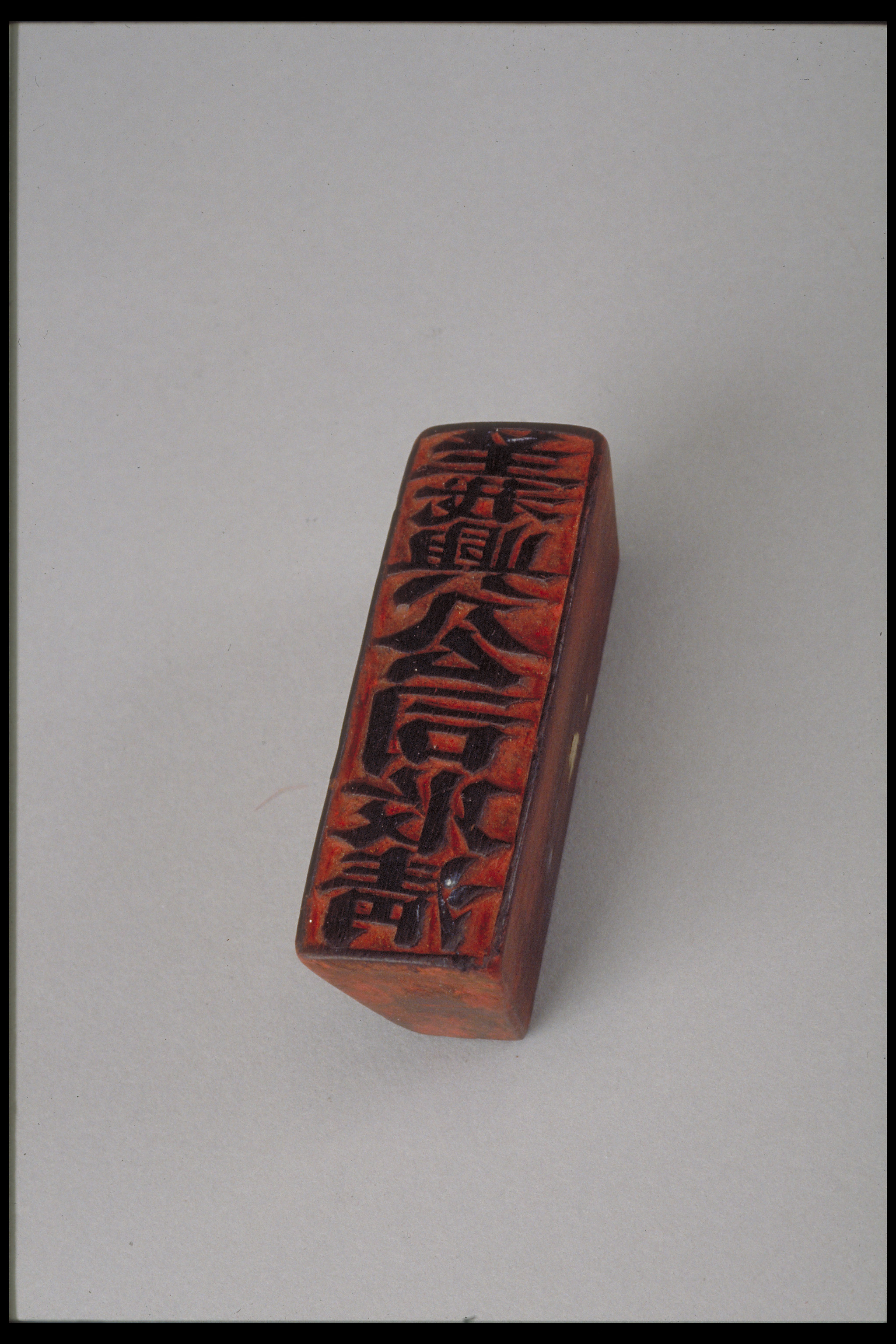 Ghee Hin Receipt Seal used to indicate the completed payment of fees.
Ghee Hin Receipt Seal used to indicate the completed payment of fees.
Image courtesy of the National Museum of Singapore, National Heritage Board.
[related_story]
Trippiest orientation camp. Ever.
One week into your new life here, Ah Kow invites you to the kongsi's Kai Xiang Tang (开香堂): The initiation ceremony.
In the dead of night, you follow him into a pepper and gambier plantation where an elaborate system of gates and symbolic items are laid out.
You are told to roll up your left pant leg and right sleeve, and replace your shoes with grass sandals.
A man dressed in white leads you through three gates: The Hong Gate (洪门), Hall of Loyalty and Righteousness (忠义堂), and the Hall of the City of Willows (木杨城).
You follow suit, each time answering trick questions and reciting tediously long oaths.
The journey ends at the Red Flower Pavilion (红花亭), where your finger is pricked and the blood mixed with chicken blood, rice wine and sugar.
"Drink, and become our sworn blood brother," the man in white commands.
You hesitate, but the sight of the gleaming sword in his hand convinces you to take a sip.
At the end, you are given a membership certificate, which you are told to guard with your life.
The example of the Tsung Sin Kongsi (松信公司) membership certificate below contains a numerical puzzle at the top of the inner octagon. These symbols represent numbers that add up horizontally, vertically, or diagonally to 15.
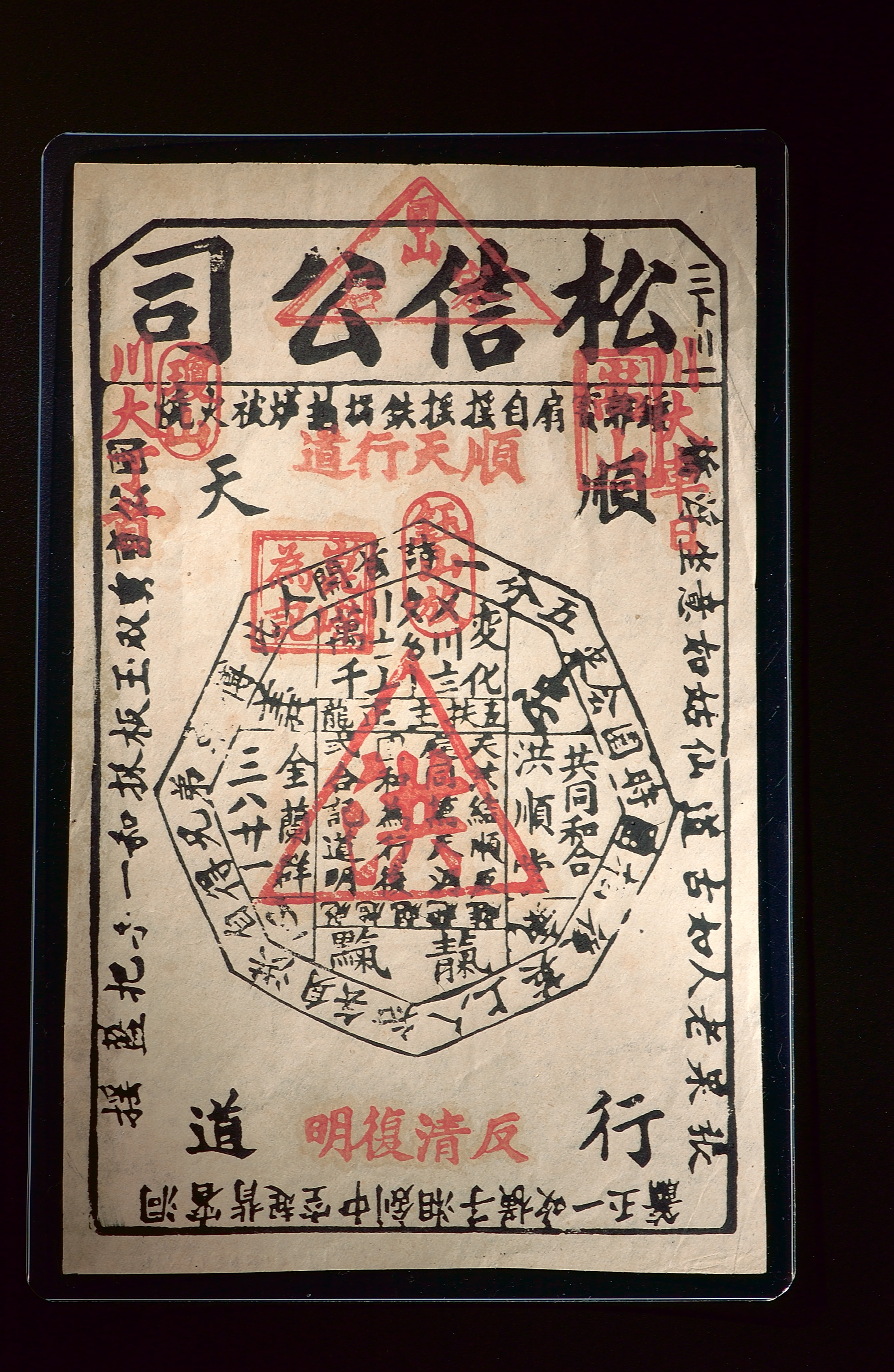 Tsung Sin Kongsi Membership Certificate.
Tsung Sin Kongsi Membership Certificate.
Courtesy of the National Museum of Singapore , National Heritage Board
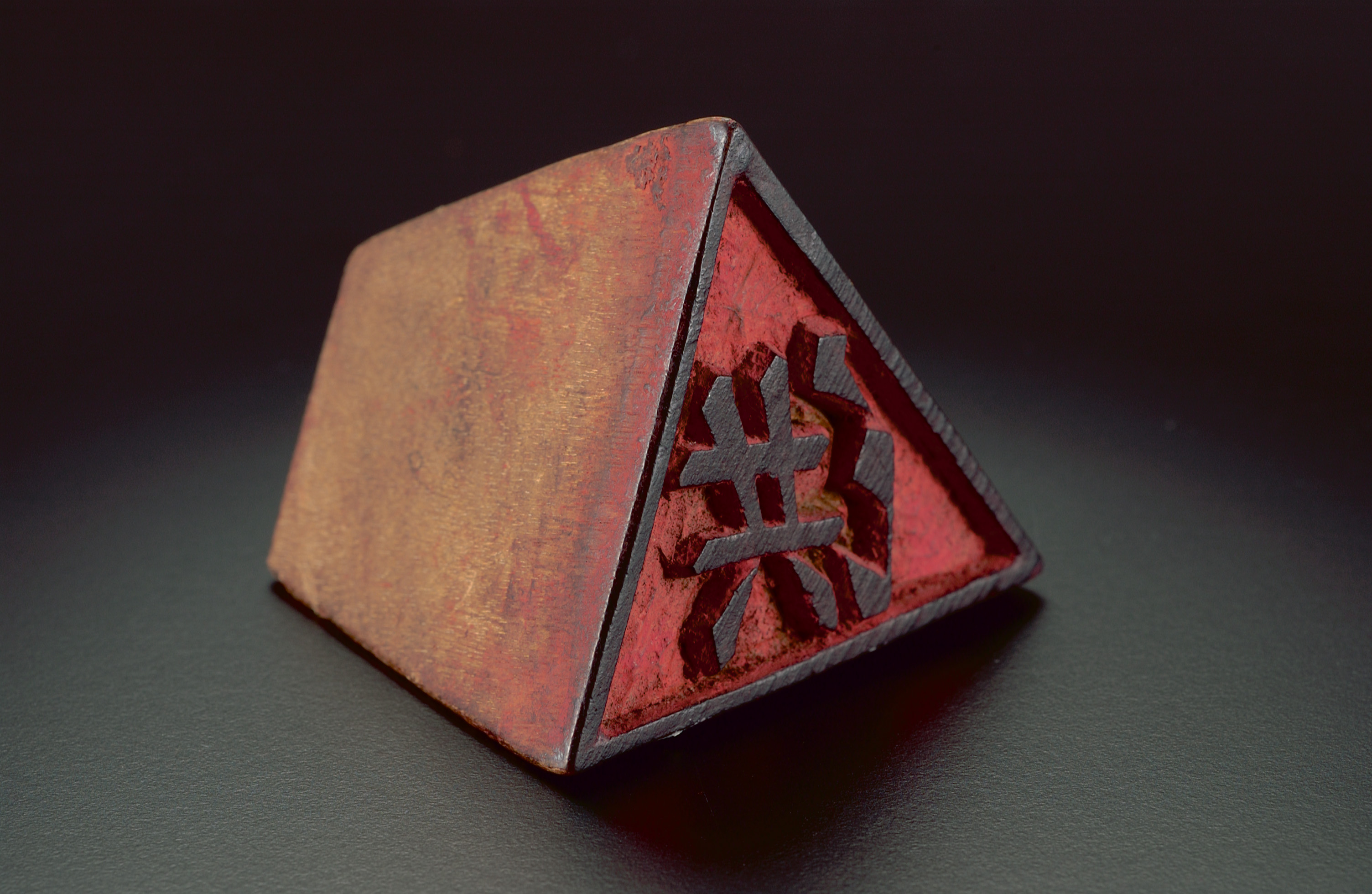 Hung Seal used by Masters of the triad lodge to validate membership certificates.
Hung Seal used by Masters of the triad lodge to validate membership certificates.
Courtesy of the National Museum of Singapore, National Heritage Board.
Swear by your <insert body part>
Triad members took their oaths very seriously.
The consequence of breaking any one of them would involve, more often than not, the loss of certain body parts.
Below are some examples 1:
- The first duty of a brother is to honour his parents. It is forbidden to abuse his brothers and parents, and if he be so dishonourable as to break this law, may he, within a month, be drowned in the ocean, his flesh float on the surface of the waters, and his bones be buried in the ocean bed.
- If a brother enters the house of another brother, tea and rice must be served to him. If any brother fails to do so, may he die by losing his blood along the street.
- Having performed the ceremonies, on returning home a brother must not sell the signs and secrets of the Hung brotherhood. If any brother be so shameless may he be killed by a tiger or have his eyes bitten out by a snake.
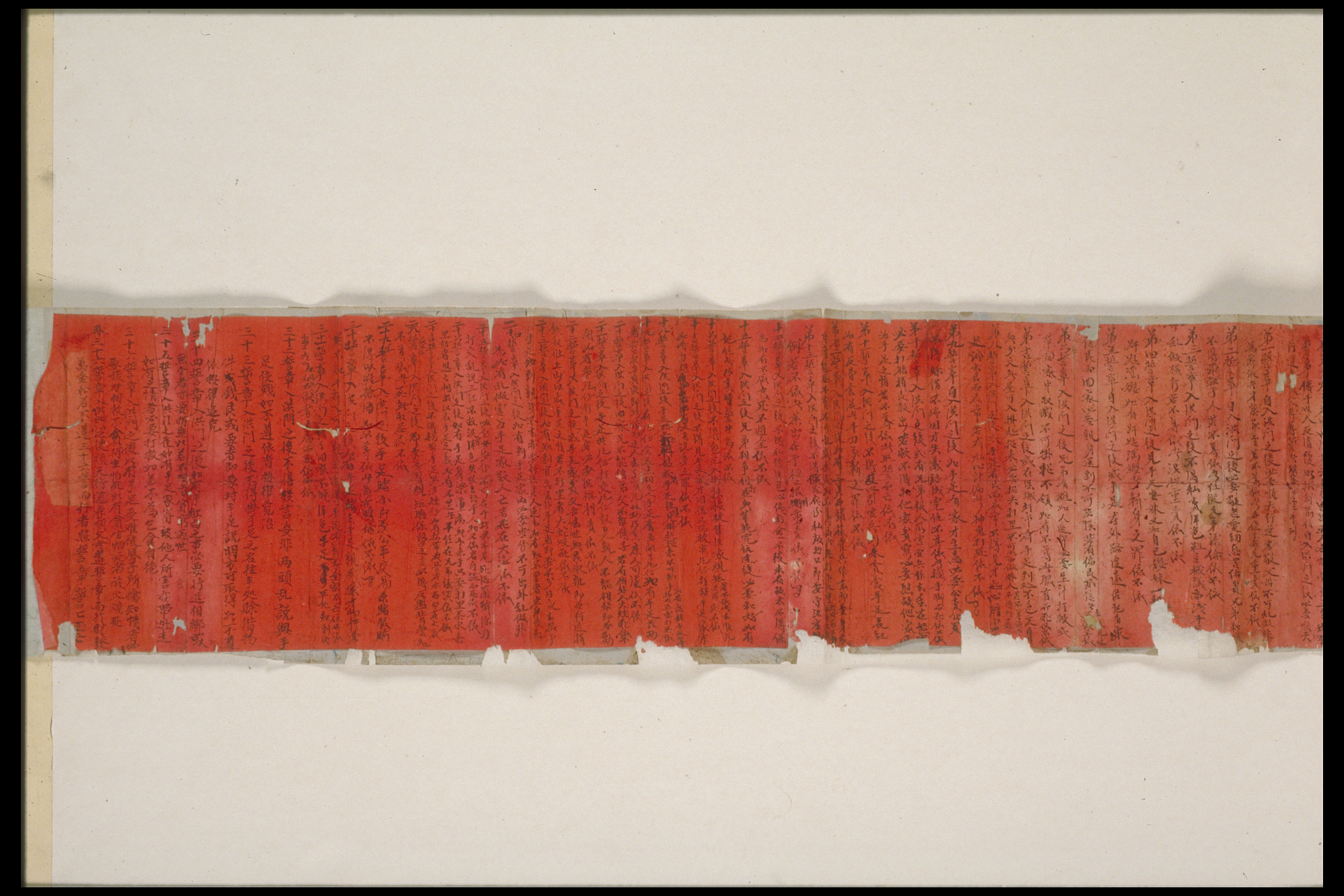 36 Oaths from a secret society’s initiation ceremony.
36 Oaths from a secret society’s initiation ceremony.
Courtesy of the National Museum of Singapore, National Heritage Board.
Check out this short video on the oaths taken by secret society members.
Signs and codes of secret societies
As you begin your work in the secret society, you learn the ropes of secrecy from Ah Kow.
You notice that your membership certificates look just like trade receipts, complete with stamps, so as to avoid undue suspicion from the outside world.
You also learn a neat set of hand signs, unique to your secret society, which enables you to communicate with your members openly.
Occasionally, Ah Kow passes you a hidden message on a piece of cloth, which can only be revealed when you fold it a certain way.
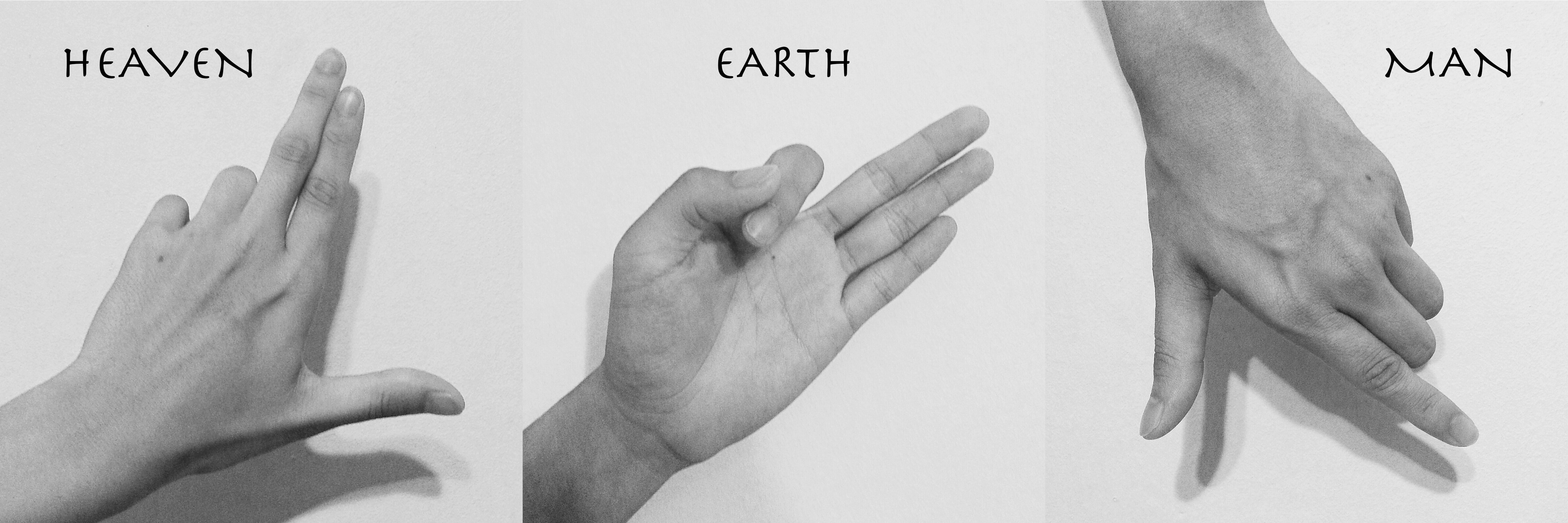 Hand signs used by secret society members2
Hand signs used by secret society members2
Chinese characters were disguised by leaving out certain strokes. For example, 顺天行道 became 川大丁首.
Numbers were used in place of words: 3-8-21 was used to represent the triad name Hong (洪). The 洪 character deconstructs into 三 (3), 八 (8), 廿 (20), and 一 (1).
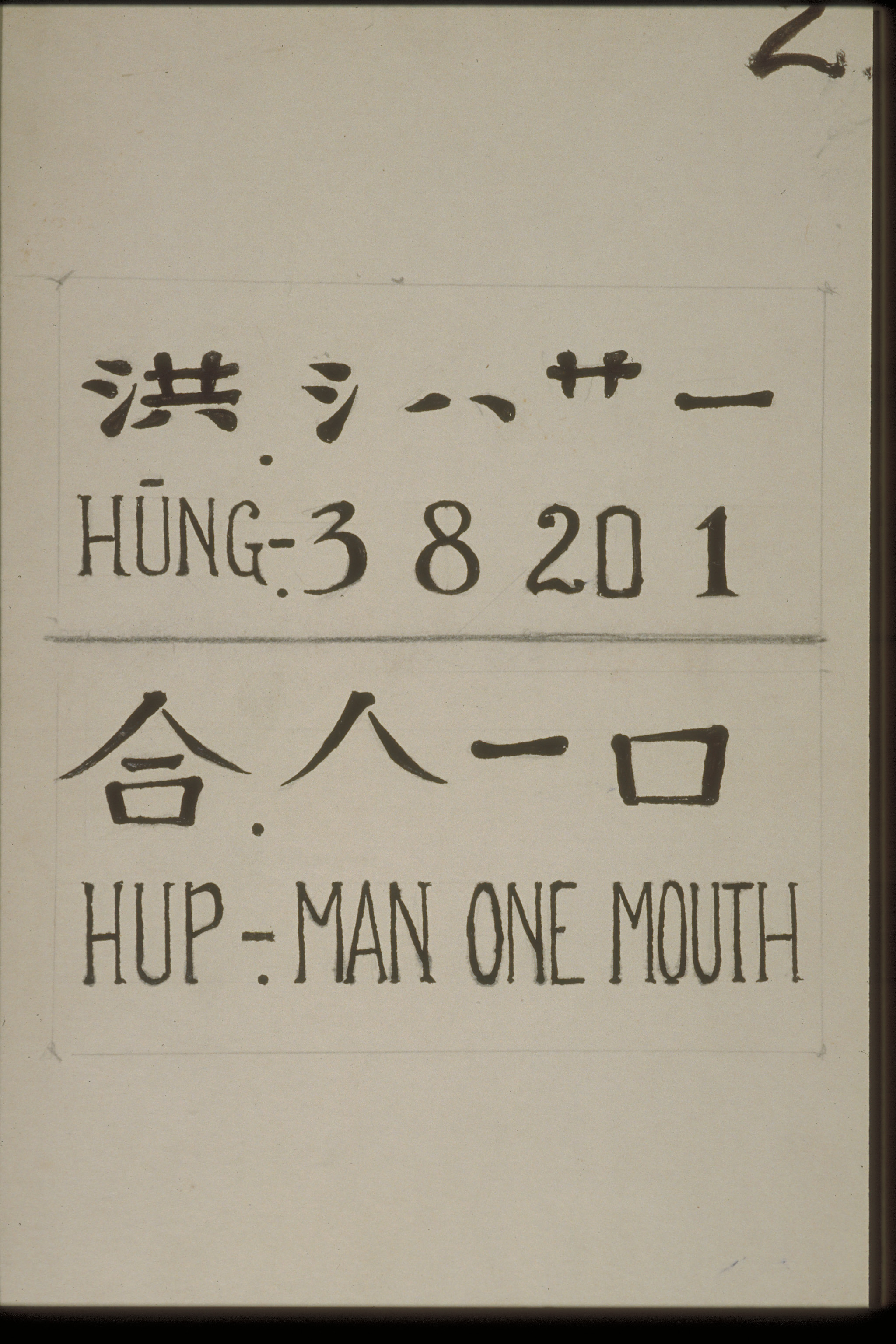 Hung code: 洪is deconstructed into the numbers 3, 8, 20, 1. The character 合 is also deconstructed into the characters for “Man”, “One”, and “Mouth”.
Hung code: 洪is deconstructed into the numbers 3, 8, 20, 1. The character 合 is also deconstructed into the characters for “Man”, “One”, and “Mouth”.
Courtesy of the National Museum of Singapore, National Heritage Board.
It is now nearly a month since you joined the triad. Ah Kow tells you that Da Ge (大哥, literally Big Brother, what the guys call "The Headman") is extremely pleased with your work so far and might be promoting you up the ranks soon.
"Whoa, not bad," you think to yourself.
The prospect of doing less bottom-feeder work yet earning more money is every coolie’s dream.
“Brother, let’s celebrate tonight,” said Ah Kow with a huge grin. “I have a surprise for you!”
Of vice & men
To celebrate, Ah Kow decides to take you out for a surprise.
He leads you out to the bustling streets of Gu Jia Zui (牛车水 -- Chinatown) and turn the corner into an alley before stopping in front of a house with dark red doors.
The sweet, pungent smell hits you in the face as the Ah Kow pushes the door open.
“Opium?”, you ask, a little disconcerted at the sight of several dazed men sprawled on wooden benches, bamboo pipes lolling about in their hands.
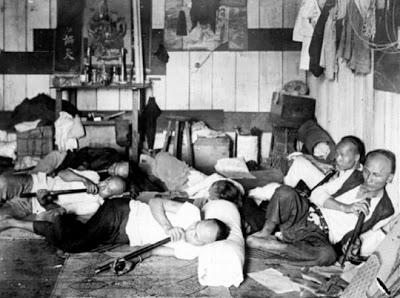 Southeast Asian Opium Den
Southeast Asian Opium Den
You learn from Ah Kow that the colonial government has once again awarded your association a license for opium processing and selling.
Opium is a very lucrative business and the British administration wants a slice of the opium pie. They monopolise the sale of raw opium by importing and selling it to the highest bidding licensees.
In turn, the licensees process it into chandu (cooked opium) and sell it in their opium dens.
Businesses or associations who cannot afford the expensive opium license often resort to buying smuggled opium, which is then processed and sold at a much cheaper price.
By the end of 1847, the Chinese made up most of the local population, numbering about 40,000 out of 70,000 persons in Singapore.
Of these, there were an estimated 15,043 habitual opium smokers, who were mostly Chinese coolies.
Opium smoking was a form of escape from their harsh realities here, with little family support, scarce entertainment and a difficult life of labour.
Opium smoking was not only addictive, but also expensive and many turned to crime to support the habit.
Although opium dens could only operate with licenses issued by the government, there were many illegal operators.
The practice of licensing opium would continue up to 1943 when the government banned it.
Even then, popular opium dens existed up to the 1970s in areas such as Tanjong Pagar, Sungei Road, Beach Road and Amoy Street.
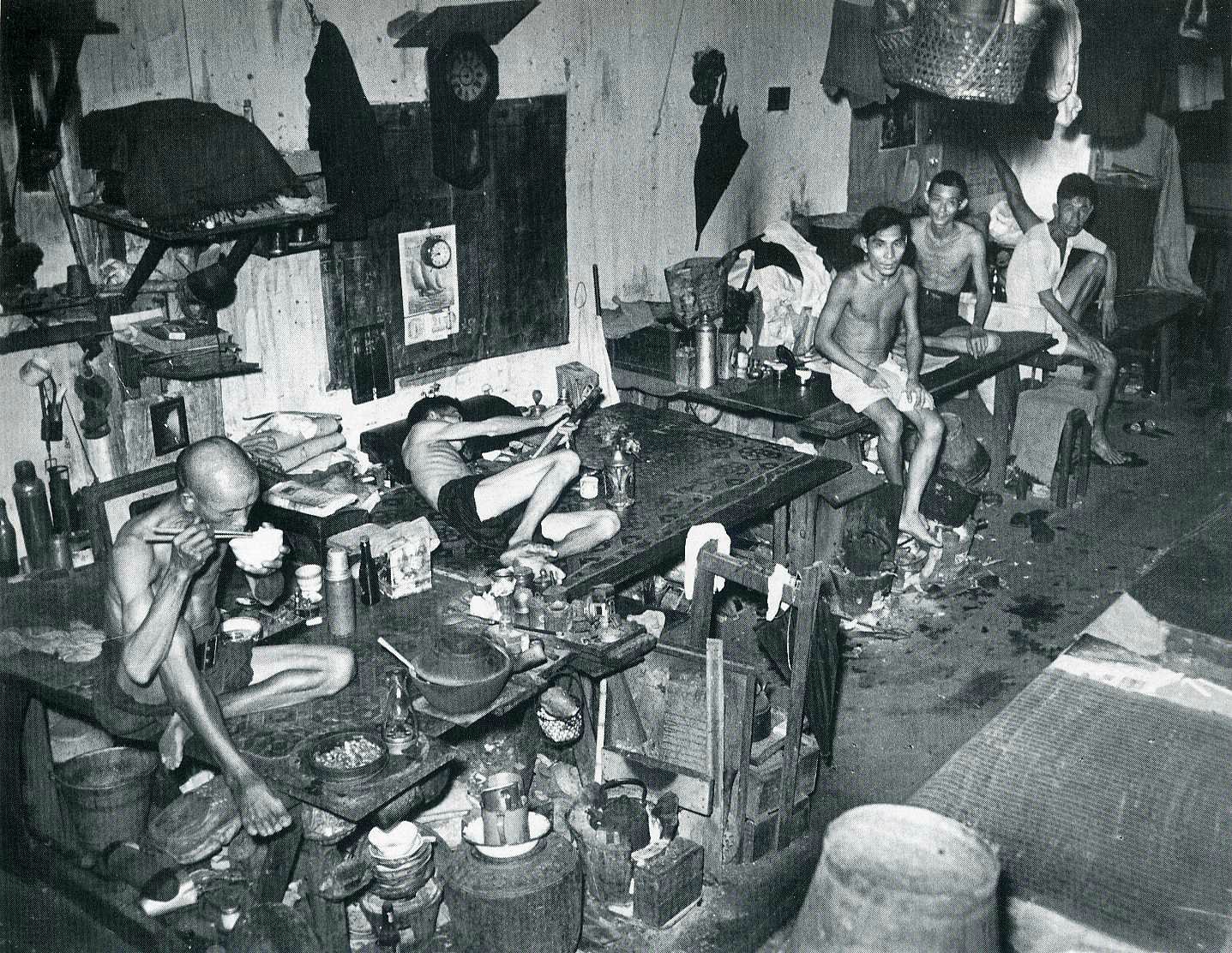 20th century opium den in Singapore
20th century opium den in Singapore
“Come! my treat!” Ah Kow grins as he hands you a pipe. You glance at the listless men in their stupor, then back at Ah Kow’s eager face.
OK. Here goes. The first puff fills your mouth with acrid sweet smoke. You mutter a little prayer as your surroundings fade into a haze ... and for the days thereafter as well.
Other businesses of the triads
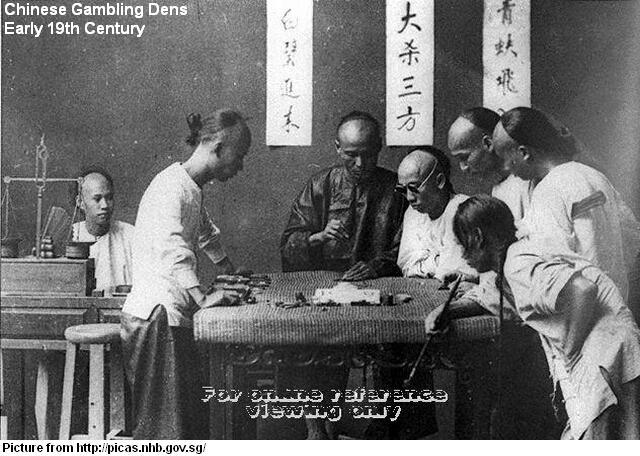 19th century gambling den in Singapore
19th century gambling den in Singapore
The colonial government also awarded licenses for the operation of gambling dens in the early 19th century.
However, in 1829, the Grand Jury prohibited all forms of gambling, forcing gambling dens underground.
Many of the gambling dens operated by secret societies were located at present day China Street which was nicknamed 赌间口 (gambling den opening).
Secret societies invested in brothels, gambling dens and opium dens because they were very lucrative sources of income that catered to the mainly young and single male immigrants.
On a darker note, these highly addictive activities kept the members of secret societies captive to their associations, ensuring the kongsi has a constant source of manpower.
Secret societies and the evolution of worker unions
The earliest forms of labour unions in Singapore were actually secret societies and clan associations. This is why older unions in Singapore have a more “Chinese” flavour to them.
Many unions descended from the secret societies or village associations that were set up here when migrant labourers first came to Singapore.
Before Singapore gained independence, many of Chinese migrants were looking to one day return home to China richer.
Their unions were “educated” by the norms and developments in China, which at that time was in the midst of a civil war between the Kuomintang and the communists.
To these unions, the KMT was seen as "evil manifestations of debauchery". The unions aligned themselves to the communists who possessed very similar structure, processes and mission to the unions.
So, many of the earlier unions exhibited a communist zest in them for this reason.
The unions congregated under the Singapore Trades Union Congress (STUC) up until 1961, where STUC got split into the PAP-backed National Trades Union Congress (NTUC) and the Barisan Socialis-backed Singapore Association of Trade Unions (SATU).
SATU collapsed in 1963 when its leaders were detained during Operation Coldstore, an operation where left-wing activists were detained.
SATU was de-registered in 1963 and NTUC became Singapore's de facto union centre thereafter.
The rest, as they say, is history.
Special thanks to National Heritage Board for granting approval for the use of the William Stirling Collection images in this article
If you like what you read, follow us on Facebook, Instagram, Twitter and Telegram to get the latest updates.
